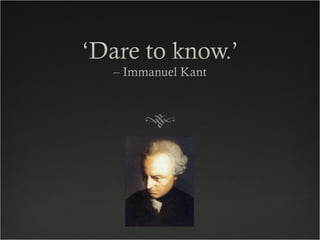Report
Share

Recommended
Recommended
More Related Content
What's hot
What's hot (20)
Development and Validation of Filipino Reading Test for Senior High School

Development and Validation of Filipino Reading Test for Senior High School
Form 3 English Language Scheme of Work with PPPM 2015

Form 3 English Language Scheme of Work with PPPM 2015
Course description of the language subject areas and

Course description of the language subject areas and
Introduction to the k to 12 integrated language arts competencies

Introduction to the k to 12 integrated language arts competencies
Form 2 English Language Scheme of Work with DSP 2014 

Form 2 English Language Scheme of Work with DSP 2014
Viewers also liked (7)
Similar to Introduction to Preliminary EE1
Similar to Introduction to Preliminary EE1 (20)
Translingualism: Building a more Inclusive Writing Center

Translingualism: Building a more Inclusive Writing Center
Principles and Practices for Teaching English as an International Language: T...

Principles and Practices for Teaching English as an International Language: T...
Florendo, melania approaches in teaching language& literature

Florendo, melania approaches in teaching language& literature
More from bhewes
More from bhewes (20)
Introduction to Preliminary EE1
- 8. Shakespeare is DEAD !
- 14. English (Extension) Objectives Preliminary English (Extension) Outcomes Preliminary English (Extension) Content Students will develop knowledge and understanding of how and why texts are valued. 1. A student understands how and why texts are valued in and appropriated into a range of contexts. 1. Students learn about how and why texts are valued in and appropriated into a range of contexts by: 1.1 recognising different kinds and degrees of appropriation and their effects 1.2 considering the relationships between a text and the culture in which it was composed 1.3 exploring and examining the ways in which language shapes and reflects values 1.4 considering the effects of different ways of responding to texts 1.5 considering the ways and reasons early and later manifestations of the text are valued 1.6 considering why some texts may be perceived as culturally significant. Students will develop skills in extensive independent investigation. 2. A student develops skills in independent investigation involving particular texts and their manifestations in various forms, and within particular cultural contexts. 2. Students learn to develop skills in independent investigation by: 2.1 engaging with a range of key texts 2.2 engaging in independent investigation of specific key texts, cultures and forms. Students will develop skills in sustained composition. 3. A student develops skills in sustained composition in a range of modes and media for different audiences and purposes. 3. Students learn to develop skills in sustained composition by: 3.1 refining the clarity of their own compositions to meet the demands of increasing complexity of thought and expression 3.2 recreating texts by varying perspectives and contexts to demonstrate how values are maintained and changed 3.3 using and manipulating a range of generic forms in a range of modes and media for different audiences and purposes 3.4 using stylistic devices appropriate to purpose, audience and context.